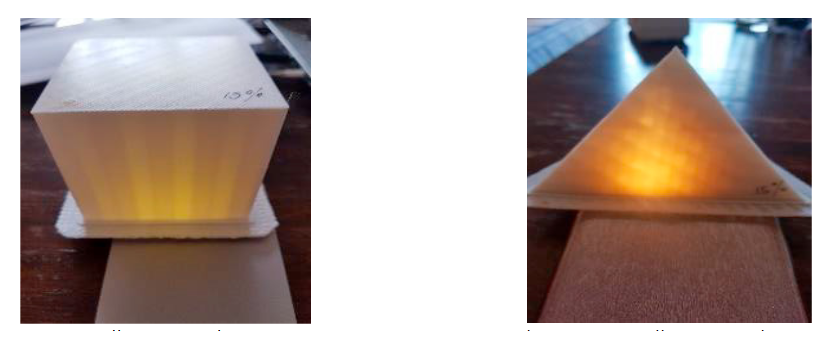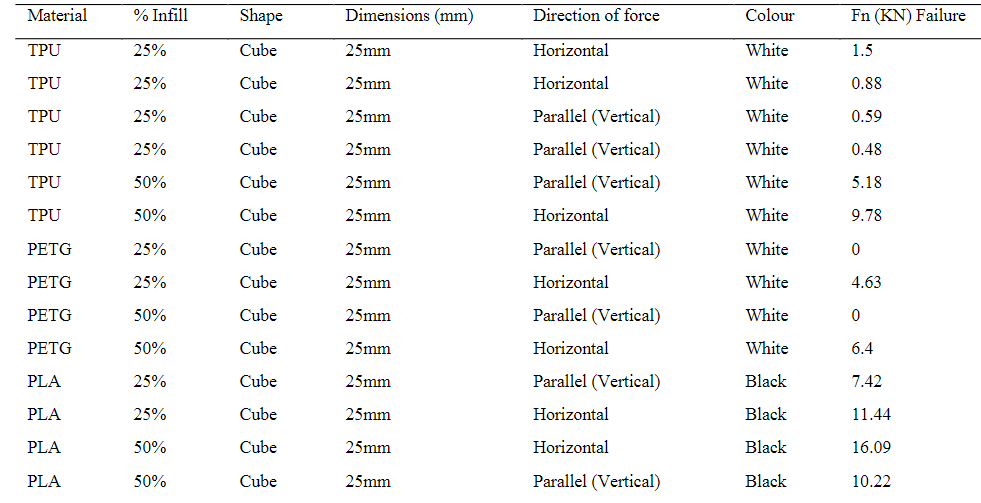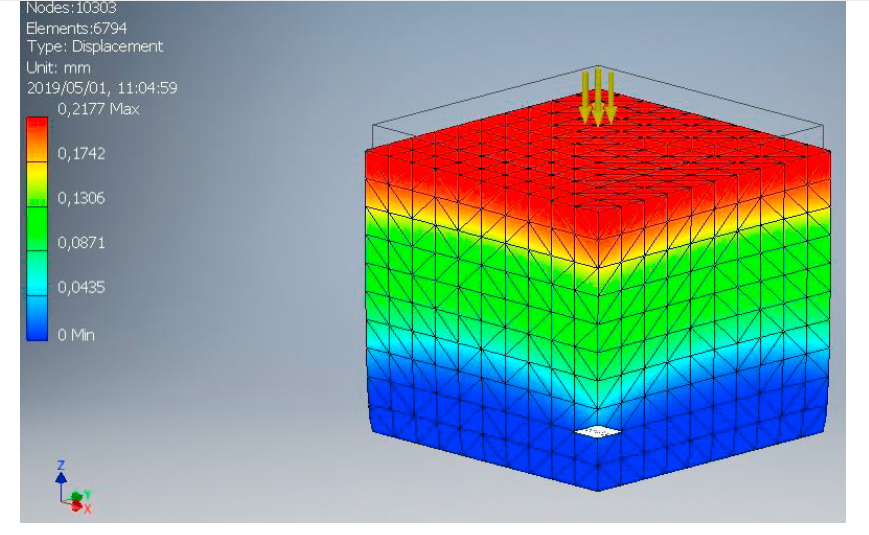Researchers D.W. Abbot, D.V.V. Kallon, C. Anghel, and P. Dube delve into complex analysis and testing in the ‘Finite Element Analysis of 3D Printed Model via Compression Tests.’ For this study, the researchers used an FEA tool for simulation and testing of 3D printed parts, with a central focus on experimenting with ‘specific imposed conditions’ on the sample models—employing a strategy that allows for much faster, more affordable assessment of parts.
FEA allows researchers (and ultimately, manufacturers) to prove a variety of different prototypes created through other methods—but now a serious focus is being placed on parts printed in numerous different materials, to include ABS, PLA, and more. Square block samples were chosen for the study due to the potential for better accuracy and distribution of stress along surfaces—with the goal of allowing engineers to finally ‘trust’ FEM in terms of 3D printed objects.
Compression testing involved labeling 3D printed samples as either isotropic or anisotropic, with a focus on avoiding anisotropy and inter-layer voids. In examining the samples, the researchers were able to see the internal structures of FDM 3D printed parts, along with evaluating densities. Both experimental and computational tests were performed.
“Results obtained using Autodesk Inventor are compared to the experimental test results. The arrow represents the direction in which the load has been applied to that of the axes experiencing the load. The horizontal axes, the original axis that the objects are printed on, representing an axially distributed load from above, against the grain of the layers, the vertical axis represents an axial load that would be experienced from the side of the test specimen, with the grain of the layers.”
FEA is centered around both the materials and techniques used, along with design—and the researchers point out that this could be different depending on the simulation software used. Both porosity and adhesion are both issues too. The researchers continued to note the ‘large discrepancy’ also between both experimental and simulated results, with test pieces exhibiting 50 percent more solidity than the experimental samples.
On noting that samples ‘behaved poorly’ regarding horizontal/perpendicular loads, the researchers realized the 3D printed block samples were anisotropic. Infill simulated results and experimental results differed greatly too, as the Autodesk design and simulation were viewed as a solid (instead of porous) object; in fact, in some cases, the samples were not similar at all.
In observing samples (or functional parts), it is critical to evaluate:
- Area of application
- Environment of use
- Operational associated stress at specific axis
“The results obtained from this study on different materials at different applied loads across the two different layering axes showed a large variation in compressive strength,” concluded the researchers. “This establishes that the design of 3D parts strongly depends on the application of the part.”
While 3D printing offers a wide range of benefits, the ability to edit designs and create one iteration after another at will is one of the greatest draws in comparison to more conventional methods of production. Researchers today are engaged in many different types of feasibility studies, ways to introduce new workflow features and learn more about cost analyses.
What do you think of this news? Let us know your thoughts! Join the discussion of this and other 3D printing topics at 3DPrintBoard.com.
[Source/Images: ‘Finite Element Analysis of 3D Printed Model via Compression Tests’]Subscribe to Our Email Newsletter
Stay up-to-date on all the latest news from the 3D printing industry and receive information and offers from third party vendors.
You May Also Like
Meltio Expands Global Reach with New Partnerships in the Americas and Europe
Spanish 3D printing manufacturer Meltio has expanded its sales network across the globe. With the addition of three new partners in the United States, Brazil, Argentina, and Italy, Meltio aims...
3D Printing Webinar and Event Roundup: April 7, 2024
Webinars and events in the 3D printing industry are picking back up this week! Sea-Air-Space is coming to Maryland, and SAE International is sponsoring a 3D Systems webinar about 3D...
On the Ground in Linares, Spain for the Meltio M600 Launch
As detailed in a previous post, metal 3D printer manufacturer Meltio launched its latest wire-laser metal deposition (LMD) machine, the Meltio M600, at its headquarters in Linares, Spain. There, I was...
Blue Laser-powered M600 3D Printer Launched by Meltio
Founded in 2019 as a joint venture between Additec and Sicnova, metal 3D printer OEM Meltio develops and manufactures high-performance and easy-to-use metal 3D printing solutions that use its patented wire-laser metal...




































